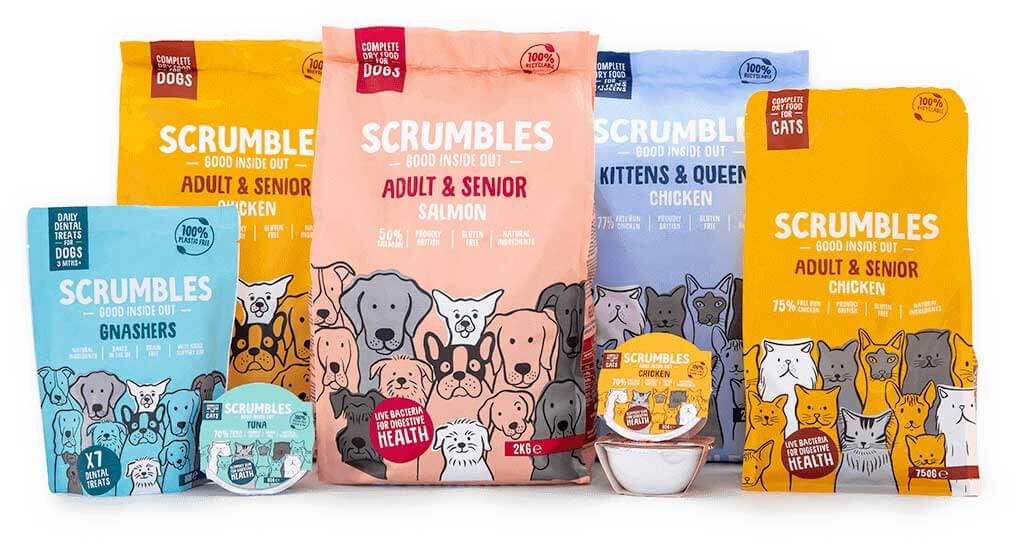Cat Tongues Explained
Unlike doggies who perpetually have their tongues out, we don’t see our kitties’ tongues all that often. Other than knowing that they’re cute and scratchy, how much do you really know about your cat’s tongue? Today, we’re going to unravel the mystery of the cat tongue, delving into their unique functions and what your cat’s tongue might be telling you.
Why Is a Cat Tongue So Scratchy?
When your cat gives you a little kiss or lick to thank you for feeding them their favourite cat treat, you've probably noticed how it feels scratchy and almost sand-paper-like. This is because the surface of all cat tongues in the animal kingdom from the ferocious lion all the way down to your old tom is filled with hundreds of tiny scoop-shaped spines called papillae. The papillae help with scooping water into their mouths when drinking and are also hollow which allows for the transportation of saliva to the tip of their tongue.
Functions of a Cat’s Tongue
Eating and Drinking
Cats can’t use a knife and fork like us so their tongue is uniquely shaped like a spoon to help them gobble down their dinner. The tip of a cat tongue is curled backwards slightly and to drink cats uniquely curl their tongue downwards and then dart it into the water. The fast speed of this motion forcefully pulls water into the back of their mouths allowing them to gulp it down. As we mentioned earlier, the scoop-shaped papillae also help your cat to lap up water as well as grip onto food and strip meat from the bones of their prey. Freaky huh!
Taste
Cat’s have 470 taste buds on their tongue which is quite low when you compare it to the 10,000 we have or 1700 that a dog has. Our tongues can sense five unique tastes, being salty, sour, sweet, bitter and umami. The cat tongue on the other hand has no sweet receptors so can’t detect this taste. This is down to them not having a certain gene (TAS1R2) that we humans have which allows us to enjoy sweet tastes so much. Maybe if we were like our kitty-cats we wouldn’t have to reach for something sweet after every meal!
Although they can’t detect sweet tastes, they can taste something that we can’t; adenosine triphosphate or ATP. This is a compound found in animal meat, which explains why our obligate carnivore cuties love meat so much! Cats are also more sensitive to bitter tastes than humans as this was a way that they could detect poisonous plants in the wild. This explains why they have such intense responses to licking sour foods such as lemons!
Grooming and Cooling
Cats can spend up to half their day grooming themselves to keep them looking purrfect. The sharp papillae on a cat tongue act like the bristles of a hairbrush helping them to comb their coat and remove dirt, debris and loose pieces of fur. The sharp spines have a hollow cavity, which helps to transport saliva into their fur and down to their skin. This is a way that they can regulate their body temperature, cooling their bodies as the saliva evaporates.
Why Do Cats Get Hairballs?
It's not a nice sound when you hear your fur-friend coughing up a chunky hairball, and those funky-looking papillae might be a reason why they get them in the first place. The hairbrush-like papillae of the cat tongue are great at untangling and cleaning their fur, however, due to their orientation pointing backwards they can push pieces of fur towards the back of your cat’s mouth where it’s more easily swallowed.
Giving your cat a good brush every week is useful to help get rid of excessive fur and reduce hairballs, particularly for long-haired cats such as Ragdoll Cats and Persian Cats. Giving them a prebiotic cat treat also helps to reduce hairballs as it lubricates the lining of their stomach to stop hairballs from getting stuck and allows them to pass through your cat more easily.
You should also avoid giving your cat yarn or string to play with as it can get hooked into the papillae on your cat’s tongue. This makes it difficult for your cat to cough up the stuck yarn or string which can cause them to choke or can risk them experiencing internal trauma from the string irritating the lining of their throats and digestive tract.
What Your Cat’s Tongue is Telling You
Your cat’s tongue can give you a small insight into their overall health. A healthy kitty should have a pink and dry tongue. If you get a peak of your cat’s tongue and it looks purple, grey, yellow, red or white, it could indicate underlying health issues such as fungal infections, heart conditions, anaemia or even cancer. If you notice a change in the colour of your cat’s tongue, or any spottiness, increased swelling or drooling, get your floof checked over by their vet as soon as possible.
Have You Tried Scrumbles Cat Dental Treats?
So, now that you know all the weird and wonderful peculiarities of your cat’s tongue, go give your floof’s tongue a closer look!
When you get up close and personal, check their teeth and breath whilst you’re there to give them a full once over on their oral hygiene.
If you’re smelling some stinky kitty breath, why not try our Gnashers Cat Dental Treats?!

They’re clinically proven to reduce plaque buildup and have added prebiotic slippery elm bark to help reduce nasty hairballs and improve the health of your cat’s digestive system.
Packed with delicious protein-rich chicken and natural ingredients they’re the perfect addition to your floof’s oral hygiene routine.










